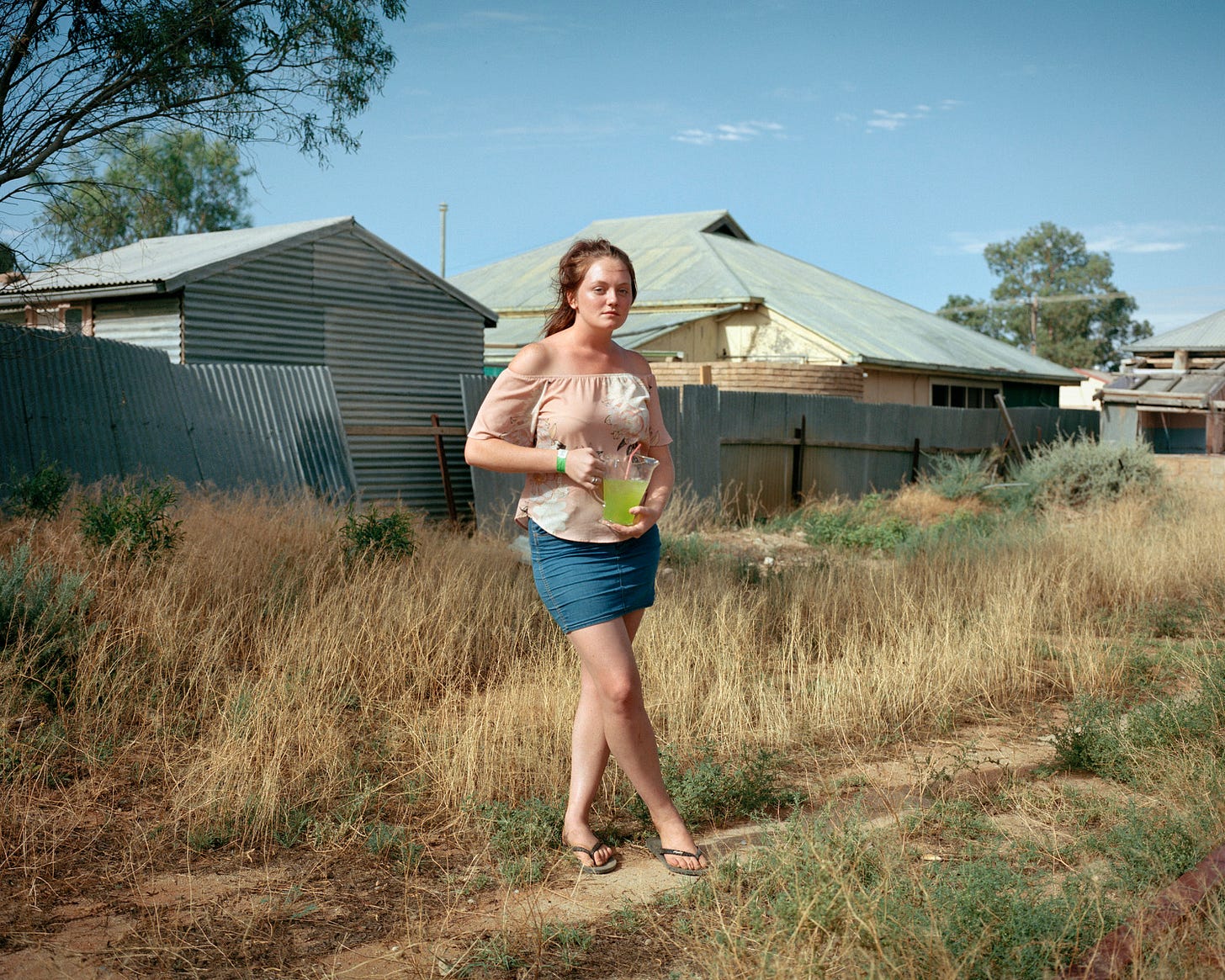How I Develop a Personal Project
Identifying the themes you are attempting to explore

Today I would like to discuss what it means to see and realize a photo project—whether it’s personal, assigned, or commissioned work. I touched on this idea in a previous newsletter about finding a metaphor with one photograph and in another about photographing surveillance, but I didn’t unpack it overtly.
Over the weekend, I was looking through notes from workshops I’ve had with students over the last year, and there was a common thread to their questions: “How do I develop a specific project?” Let’s work out what you are making a narrative about, I told them. What are you exploring on a thematic level? I’d take out a sketch pad and start brainstorming; together, we’d come up with a group of words or phrases that would become the defining principle of the work.
Let’s play with a hypothetical example. Pretend I was assigned to make a series of photographs of a group of rock climbers in Utah for a magazine. For this project, the themes that come to mind are perseverance, camaraderie, strength, resilience, and environmental beauty. But they could also be isolation, fear, dominance over nature.
There is no end to the words or phrases you can come up with. The premise is to make a list and then curate it so it aligns with the story you want to tell. In an advertising context, this list could be aligned with a brief or treatment. I make this list regardless of who I am working with.
I come from a photojournalist background where I respond to events and immediate phenomena; it took me years to develop my craft before I started reflecting on my work like this. I’d been dissatisfied with the way I was responding to stories as a photographer. When I looked at artists’ or photographers’ work I was drawn to, I wasn’t achieving the same cohesive, creative thesis.
The first time I developed a project by conceptualizing its themes was when I returned to Australia in 2014 to photograph the Australian bush. I started in the purpose-built mining town of Moranbah in Queensland. I was burnt out from all the international work I’d been doing and wanted to tell a story about my own country. I was interested in Moranbah because mining was an integral part of the shaping of modern Australia. Beyond mining, I had made a list of phenomena to cover, like I might do for a news assignment: country show (fair), youth, drought, workers, pig hunting, youth, small town, cattle station, Aboriginal community, mine, bachelor and spinster balls. Like much of my previous work, I was being more reactive than reflective and didn’t have a clear concept of the story I was trying to tell beyond the micro-events I witnessed. I felt frustrated.
One night I sat down at the Black Nugget pub in Moranbah, a single-story concrete Besser-block construction with a tin roof, and wrote a new list of words and themes that epitomized the Australia I was looking for: isolation, dominance over nature, colonial legacy, ‘The bush’, fleeting, remote, engulfing, remnants, centralization, displacement, mechanization, loss of innocence, modernization, decline, and environmental degradation. It was a shift in seeing small events as part of a larger context.
One of the next times I went to a bachelor and spinster ball, a regional dance where youth from surrounding farms and towns gather to party, I didn’t take pictures of the stage or the band or the spectacle of the event. I didn't take many photographs at all, but I found one photograph that depicted a loss of innocence.

Without a clear understanding of the archetypal themes you are attempting to explore, it's easy to get confused by your own imagery, or seduced by the power of a single image. I make this mistake regularly. But by stripping a project back to its core themes, you have creative guideposts. And when it comes time to edit, you have a thesis to hold every picture up to.



Adam: Thank you for sharing your thoughts on this important concern for photographers working on personal projects.
The first list you created for yourself were individual subjects, compiled from afar. But once you were there, in Australia, your list became more refined, the words were less about individual subjects and more about over-arching themes. This difference is all part of the process of developing a personal project. It demands being open to adapting one’s vision to what is actually there on location and going for it in a very disciplined way. That’s when you have a vision.
Hey Adam, thank you for this insightful journal entry. My biggest struggle has always been understanding those archetypal themes, and I'm easily distracted or overwhelmed by a single image. Coming from more of an artistic approach rather than journalistic, I've always focused too much on the single images and it's what holds me back at times. I made a similar list to your initial list for my outback NSW trip, which ended up working out for a loosely constructed personal project, but now I go through those images nearly 10 months later I admit, I'm struggling to make sense of it...